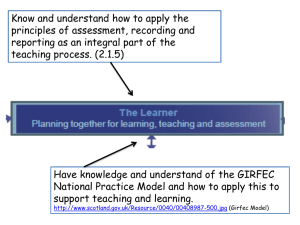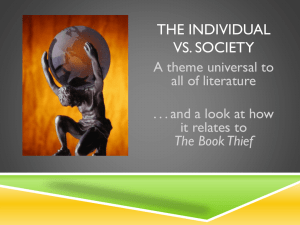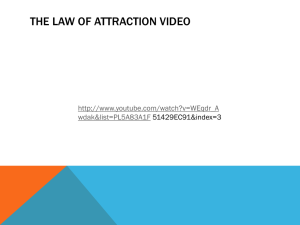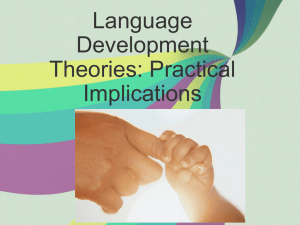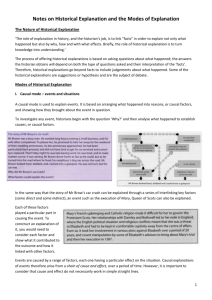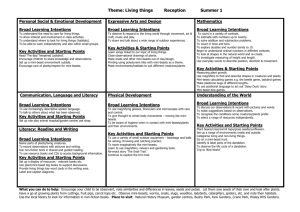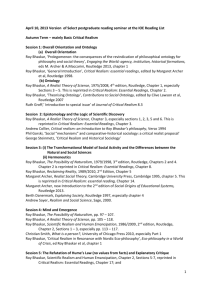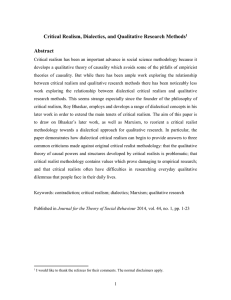Critical realism
advertisement
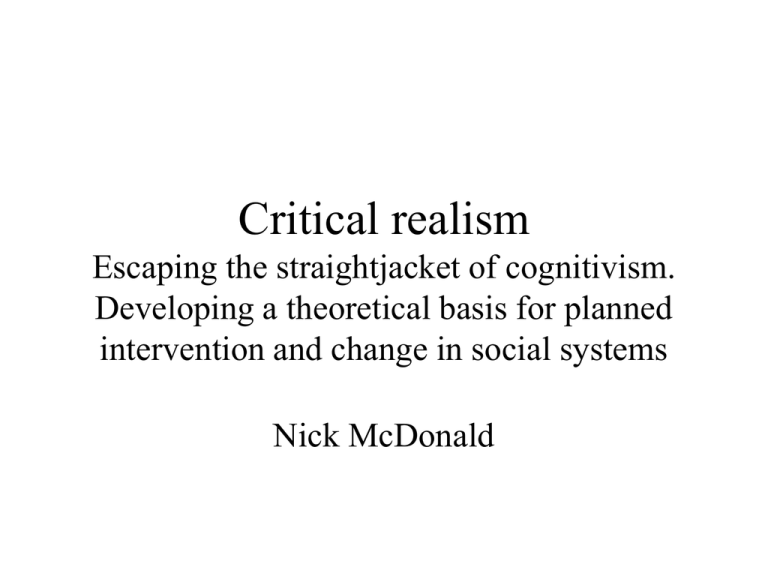
Critical realism Escaping the straightjacket of cognitivism. Developing a theoretical basis for planned intervention and change in social systems Nick McDonald Anti-realism There are 2 main philosophical positions in social science which deny that we can have knowledge of reality • All reality consists in conscious states – ‘phenomenalist idealism’ – E.g. cognitive psychology • Reality is socially constructed – ‘social constructionism’ – Various theories from social cognition to critical theory Organisations as mental constructions - some examples • Organisation theory as metaphor (Morgan) – – – – Machines Cultures Organisms Domination and suppression • Organisations as relational processes (Hosking and Morley) – Enactive, socially constructed processes – Against reification, ‘entitative’ concepts, • Organisations as ‘sensemaking’ (Weick) Problems of cognitive & social constructionist models Cognition / social cognition • Focus on internal states (mental models) or local relationships with technology (ergonomics) • Tends to lack ecologically valid evidence of actions in context • No independent criterion beyond intentionality – When is an action correct/ appropriate/ effective? – Takes external authority for granted - cannot ever challenge whether a rule or procedure is adequate Social construction • Represents ‘reality’ as experienced by participants • Rich interpretation • No evaluation criteria – Cannot evaluate strengths or weaknesses of social organisations • No causal analysis – What social constraints influence how people act? • Cannot be used to design better social systems A logical fallacy Denial of reality is based on a logical fallacy: • We are only aware of reality through mental states – Tautology • The reality we experience is construed / constructed mentally – Restatement of tautology • Therefore there is no reality other than our experience / mental construction – False inference • Therefore the object of human / social science is only cognition / mental constructions – False conclusion 3 varieties of realism • Naïve realism – Gibson’s theory of visual perception • Speech acts and institutional facts – Searle: ‘Construction of social reality’ • Critical realism – Bhaskar: ‘Possibility of Naturalism’ Critical realism (Bhaskar) • Society socialises individuals who reproduce or transform social reality through social action • Social systems are real, with real causes and constraints that are external to the individual • They are created by people, unlike natural systems, but can be investigated, like natural systems • Role of agency - intentions as causes of actions Society Reproduction / transformation Socialisation Individuals What is a social system? • Normative regularities of social action create social systems • But, norm is an ambiguous concept – What should be done – What normally is done • In social systems with important consequences – Relations of power determine what ought to be done - the official system – The contingencies of situated action determine what is done – The regularities of situated action create the real system • The real system is what normally actually happens A social theory should explain: Desire, mental model, Sense-making Intentionality Small scale Short term Action Movement / change Long term Culture Large scale Near Simple Social system Causality – constraint Complex Remote Micro Task/activity Social institution plus technology & environment Macro Organisation / Social system Action, system, context • Actions – Make social processes work (or not) – Are not necessarily governed by the functional logic of operations, but by broader social processes – Can be represented in narrative accounts • System – Aggregation of social action in regular generic pattern – Operational processes are only part of the social system – Formal system may differ radically from real system • Context – Causal influence on action, mediated by people making sense of their situation, understanding (imperfectly) the constraints in which they are acting and formulating intentions – Understanding context often makes intentions transparent Social Systems • Reality of social systems (SS) – They have compelling force upon their members • Our knowledge of an SS is imperfect & partial – We ‘construe’ reality rather than ‘construct’ it • One starting point is to look at operational processes – Most work we do is based on a functional sequence linking input to outcome • Other social processes (not directed at the functional goal) may facilitate or inhibit operational processes – Should not assume all social processes are goal-driven (teleology) Some core elements of social processes • Structural characteristics of relationships – Power, affinity of interest, authority, expertise… • Mechanisms of social interaction – Co-ordination by mutual adjustment, supervision, standardisation of skills, output, etc. • Capacity of individuals/ groups – Competence • Quality of social relationships – Trust Action • Actions instantiate social processes – Stability of social systems is only relative – Constantly reproduced or transformed by aggregated activity • Causal structure of action and consequence – Intention, action, result, consequence The logic of action (according to von Wright) • Acts create events which bring about change in the world – Transition of one state of affairs to another – Initiating, transforming or ending a process • 4 logical possibilities – – – – Doing something Undoing something Preserving some state Preventing some state coming about • Forebearing to act in the above ways gives 8 possibilities of action Context • Structured model of context / situation? – Current social processes – Actions of others – Environment • Physical, technology, social, organisational – Relevant history • Self, group, organisation Culture • Culture and system are ‘two sides of the same coin’ • Therefore a cultural account has to mirror all the same relations as outlined above – In the domain of meanings and values – Not the domain of functions and causality • Culture links, through sensemaking, to intentions • Cultural accounts give interpretive richness to system descriptions Stability and change • The social system constrains/directs action, but not absolutely - role of agency. People act intentionally as agents. • Actions can reproduce or transform the social system • Stability and change represent the resolution of the tension between – Real actions in time of individuals and groups of individuals • Influenced by socialisation, but directed by intentions – Normative regularities of aggregated actions of individuals • Reproducing or transforming the social system, socialising individuals Society Reproduction / transformation Socialisation Individuals Intention and action • Incompatible theories – (A) Intentions are causes of action (Bhaskar) – (B) Intentions are retrospective justifications of action (Cognitive dissonance theory) • If B is correct then the motivation of action is not comprehensible & cognition is essentially conservative (no possibility of intentional change in actions and hence of planned social change) • It is difficult to reconstruct intentions, but it can be done through exhaustive reconstruction of the context of action Relevance and Leverage • Two questions about a useful theory: – Does it address the mechanisms we wish to explain (is it relevant)? – Does it enable us to change the situation in a positive way (does it give us leverage)? • Cognitive and social constructivist theories only address cognitive/mental mechanisms – Ignore causal mechanisms in social systems (lack relevance) – Only focus on change mechanisms involving changing mindsets (e.g. training) - not a powerful influence if nothing else changes (limited leverage) • If we want to change the ways which social systems function in order to improve outcomes, we need a theory which is relevant (addresses actions in social systems) and which gives leverage (identifies how to change the system to improve the outcome). Bibliography • Searle, J.R.(1995): The Construction of Social Reality. Allen Lane: the Penguin Press • Von Wright, G.H. (1963): Norm and Action. London: Routledge & Kegan Paul – Chapter III Act and Ability, pp 35-55 • Bhaskar, R (1979): The Possibility of Naturalism. Brighton: Harvester Readings • Robson C. (2002): Real World Research (second edition). Oxford: Blackwell – Chapters 1 & 2, pp. 3-44 • Sayer, A. (2000): Realism and Social Science. London: Sage – Pp. 10-28 • Some of our own work discussed in the lecture can be seen in: – McDonald N.(2006): Organisational resilience and industrial risk. In Resilience Engineering (Eds.: E. Hollnagel, D. Woods., N. Leveson) Aldershot:Ashgate
